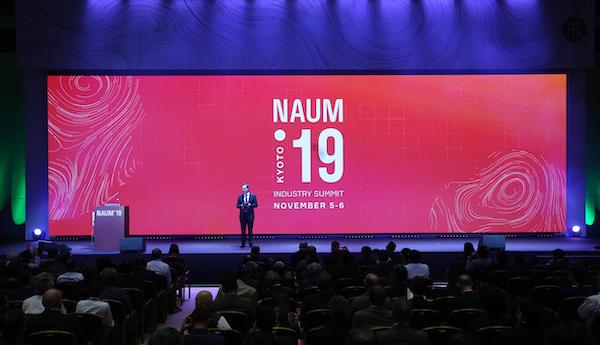
From wind turbines and tires to anti-static packaging, graphene nanotube-enhanced polymers are increasingly in demand, helping build an ecosystem of greater efficiency and durability.
New breakthroughs and the main challenges in the field of nanopolymers were among the key topics of discussion at the 2019 Nanoaugmented Materials Industry Summit (NAUM’19) in Kyoto, Japan, on 5-6 Nov.
Participated in by 450 delegates from 31 countries, the summit discussed new applications for the tiny tubes, which combine permanent anti-static properties with good mechanical performance.
The Lehvoss Group presented their results on improving the performance of PA6, PA12, PPS and TPU with graphene nanotube formulations that are already available on a commercial scale.
With the help of graphene nanotubes, the company has been able to develop the first electrically conductive laser sinter material in the market, suitable for power bed fusion and FFF technologies.
“If you think about applications, these are carriers, trays, housings, switchers, containers and medical equipment,” said Marco Burth, Lehvoss Group product development manager.
Swedish rubber & plastics group Trelleborg AB highlighted the ability of graphene nanotubes to provide conductivity and to improve ageing and abrasion resistance in thermoplastics.
The company has employed the materials to address the issue of radar cross-section (RCS) in wind turbines, which generally interferes with airport-approach radar systems. Using graphene nanotubes in thermoplastic components helped the company create a stealth coated object able to absorb over 99% of the incident radar wave..
“Gigawatts of renewable energy power can be unlocked by using this technology,” explained Adam Nevin, innovation lead of Trelleborg Applied Technologies.
The Finnish company Arctic Biomaterials focuses on sustainable and biodegradable plastics. “We are creating biodegradable composites with Tuball nanotubes,” said Ari Rosling, R&D director.
By overcoming the typical drawbacks, these biodegradable polymer nanocomposites are suitable for the direct delivery of electrical stimulation to a cell, and for use as tissue material for osteosynthesis and for neural and cardiac repair. They can also be used as a component material for transient electronics and anti-static packaging.
A huge market that is already adopting graphene nanotubes is rubbers and tires.
“The key issue for the industry is combining mechanical performance with a stable level of conductivity,” noted Ekaterina Gorbunova, vice president for elastomers of OCSiAl.
Nanotubes solve this problem in NBR, EPDM and natural rubbers, according to OCSiAl.
Describing them as the “third big revolution” in the tire industry, after the inventions of radial construction and silica technology, Jean-Nicolas Helt, OCSiAl development and support leader, said graphene nanotubes improved “all the key properties at the same time”, something that was unachievable with any conventional additive.
“Tuball nanotubes optimise the overall performance, improve the abrasion resistance leading to a longer life, bring a strong improvement in wet grip that boosts safety, enable excellent electrical conductivity resulting in equipment protection, and allow a unique improvement in rolling resistance that reduces vehicles’ energy consumption and emissions,” he added.
Japanese multinational manufacturer Daikin Industries is also using Tuball nanotubes to increase the tear strength, conductivity and modulus of fluoroelastomers, which are already in high demand in the automotive and semiconductor segments due to their heat and chemical resistance.
Source: Plastics News Europe
